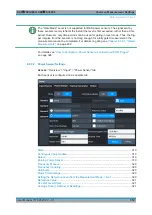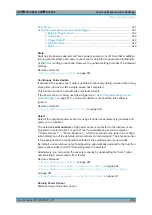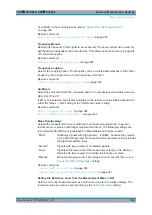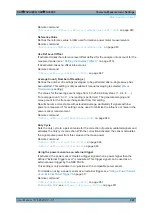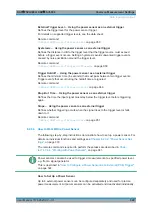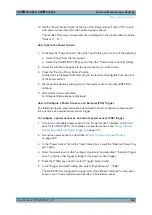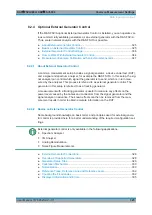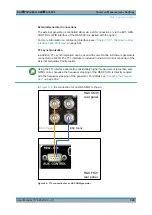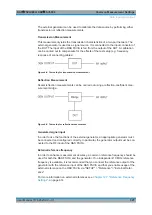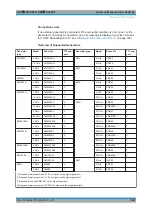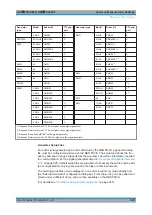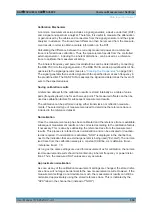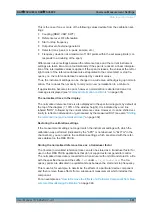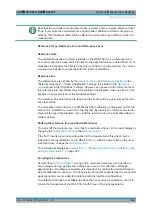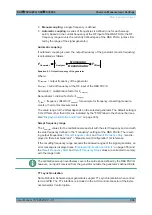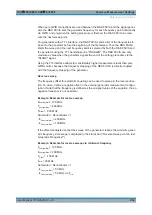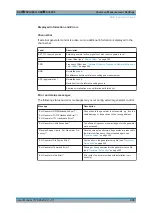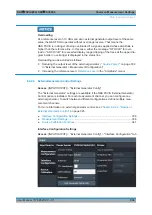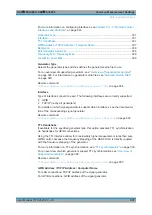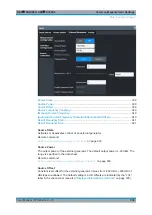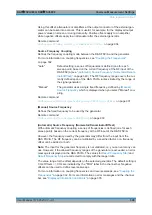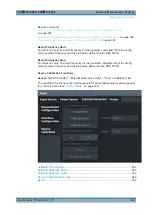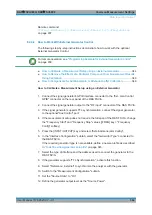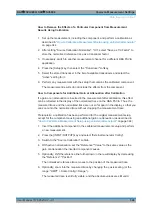
Common Measurement Settings
R&S
®
FSVA3000/ R&S
®
FSV3000
332
User Manual 1178.8520.02 ─ 01
Note that the
normalized
measurement data is stored, not the original
reference
trace!
Thus, if you store the normalized trace directly after calibration, without changing any
settings, the transducer factor will be 0
dB for the entire span (by definition of the nor-
malized trace).
Reference Trace, Reference Line and Reference Level
Reference trace
The calibration results are stored internally on the R&S
FSV/A as a
reference trace
.
For each measured sweep point the offset to the expected values is determined. If nor-
malization is activated, the offsets in the reference trace are removed from the current
measurement results to compensate for the inherent distortions.
Reference line
The reference line is defined by the
and
in the
"External Generator" > "Source Calibration" settings. It is similar to the
defined in the "Amplitude" settings. However, as opposed to the reference
level
,
this reference
line
only affects the y-axis scaling in the diagram, it has no effect on the
expected input power level or the hardware settings.
The reference line determines the range and the scaling of the y-axis, just as the refer-
ence level does.
The normalized reference trace (0
dB directly after calibration) is displayed on this ref-
erence line, indicated by a red line in the diagram. By default, the reference line is dis-
played at the top of the diagram. If you shift the reference line, the normalized trace is
shifted, as well.
Shifting the reference line (and normalized trace)
You can shift the reference line - and thus the normalized trace - in the result display by
changing the
or the
.
If the DUT inserts a gain or an attenuation in the measurement, this effect can be
reflected in the result display on the R&S
FSV/A. To reflect a power offset in the mea-
surement trace, change the
Chapter 8.2.4.5, "Measurement Example: Calibration with
Coupling the Frequencies
As described in
on page 330, normalized measurement results are
very accurate
as long as the same settings are used as for calibration
. Although
approximate normalization is possible, it is important to consider the required frequen-
cies for calibration in advance. The frequencies and levels supported by the connected
signal generator are provided for reference with the interface configuration.
Two different methods are available to define the frequencies for calibration, that is to
couple the frequencies of the R&S
FSV/A with those of the signal generator:
Data Input and Output

